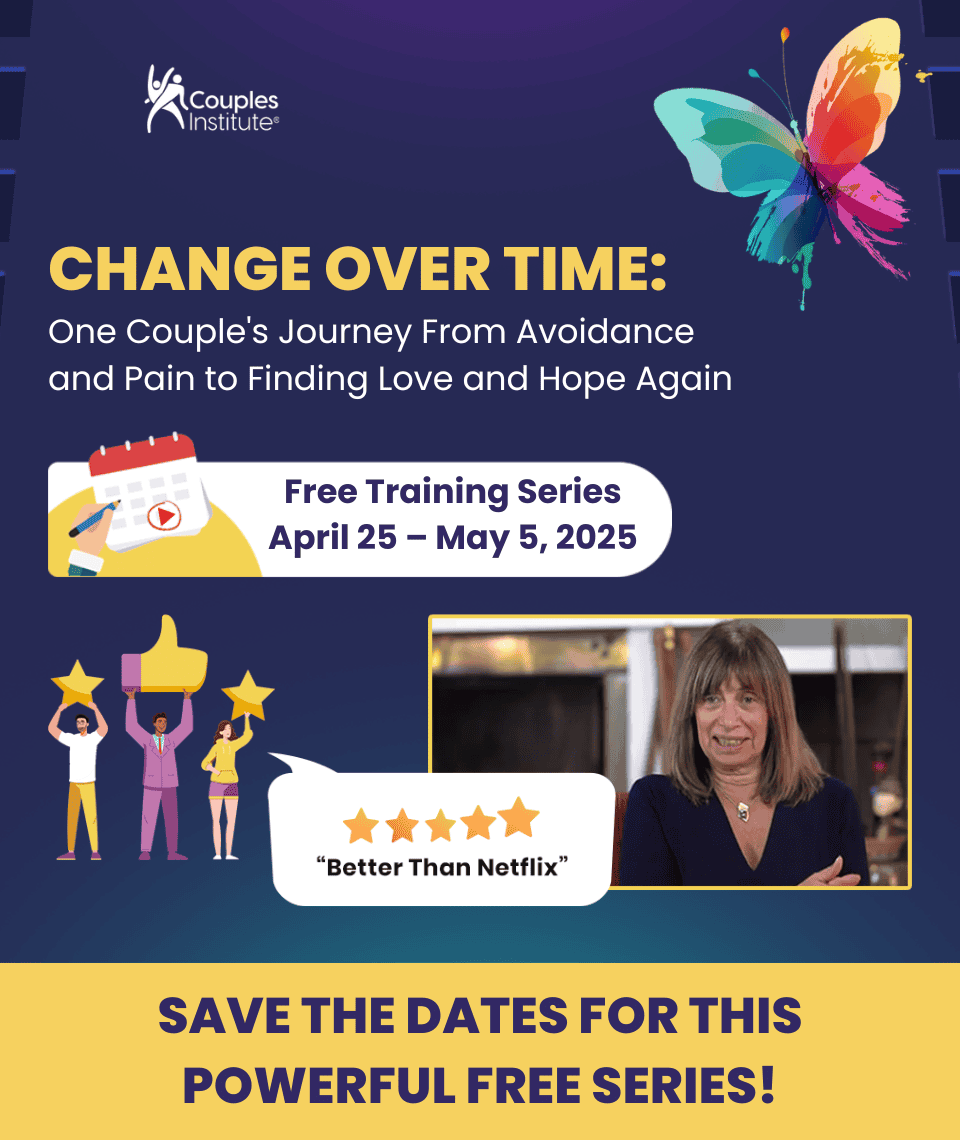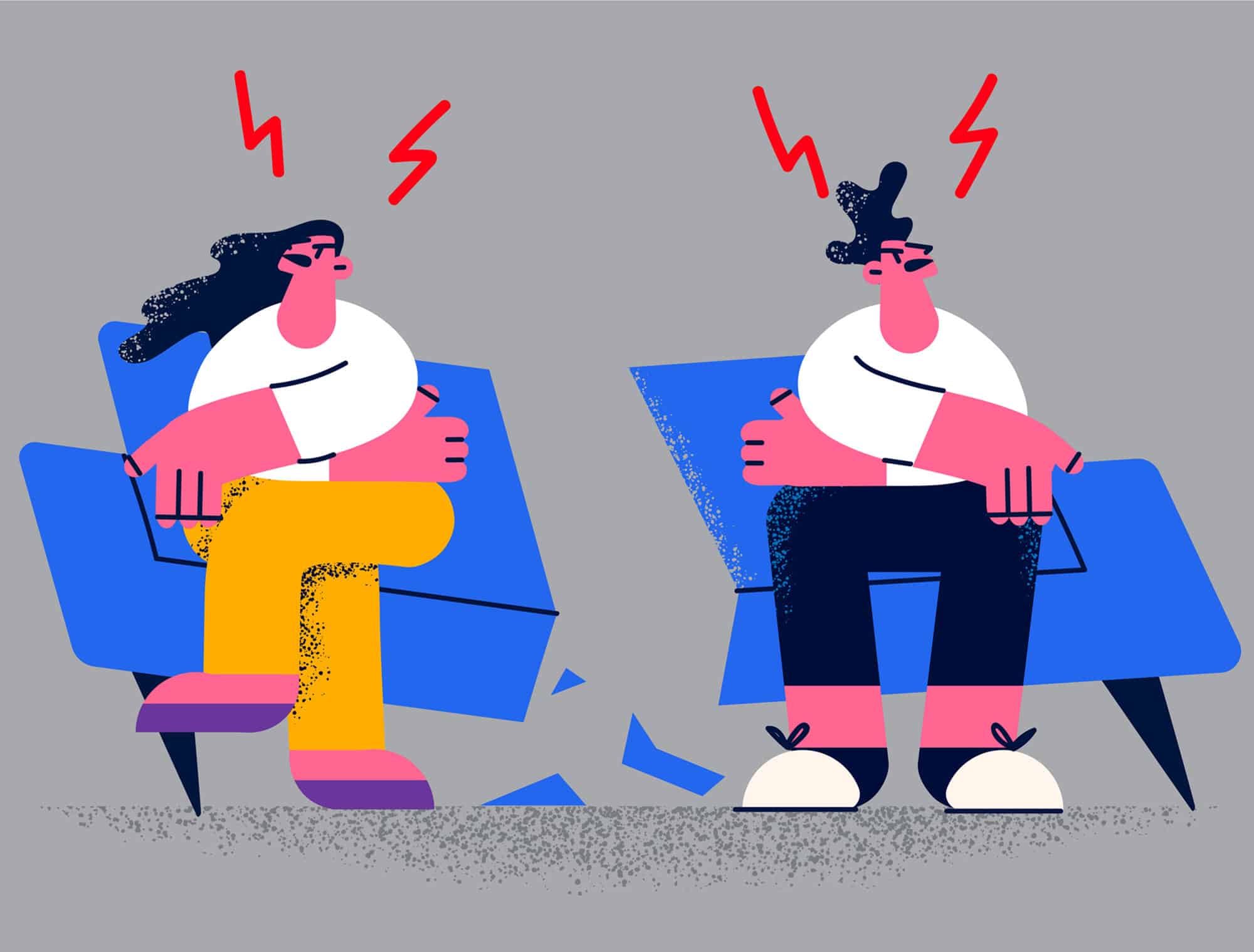I recently sat in my office listening to a couple named Bill and Sally describe twenty years of conflict avoidance and intimacy avoidance. Their communication was packed with vague unspecified references and overflowing with examples of passivity.
I thought, “Some couples work so very hard to avoid any intensity. Will Bill and Sally allow me to direct, confront and support them? Or will they tenaciously hold on to old patterns that feel safe?”
These partners avoid direct communication on any potentially charged topic. They rarely initiate or express desires. They don’t know how to turn up the heat and will communicate in a way that obscures any possibility of doing that. They are acutely tuned in to any indications of anxiety in each other and will rapidly dance away from being direct in order to diminish their anxiety. Anxiety is never viewed as a signal for growth waiting to happen. Instead of moving towards the discomfort, they quickly move away.
So, for this blog, I am going to list some ways that therapists contribute to this problem and get inadvertently stuck. Ask yourself, “Do any of these fit me? Do I know when I am caught in their net of obfuscation? How do I extract myself?”
How Therapists Unwittingly Contribute to Conflict Avoidant Communication
- Being overly empathic or being too supportive when a client responds passively to a question you ask
- Talking to only one partner at a time rather than asking partners to talk to each other, especially when there is intensity emerging
- Offering too many insights and blurring the intensity of your one main confrontation
- Allowing tense issues to quickly drop out of the discussion
- Keeping the work in the room too behavioral
- Being too nice!
Working with long-term conflict avoiders is challenging work. It will take consistent energy and internal fortitude from you. At times you will be the only person in the room who tracks the direction that the session is going. You must surface tough issues, initiate intense topics and be able to structure sessions to keep the couple in the developmental tension.
One of my favorite sentences is “Let’s back up.” I use it to take the client back to the moment where they escaped from any emerging intensity. The intensity may come from a self-confrontation or from discussing something with their partner that has previously been avoided.
Another challenge is your willingness to be silent while you are sitting with them allowing their communication process to impact you. As I sat with the couple two weeks ago, asking myself so many questions, I finally realized what I wanted to ask.
“Bill, will you tell Sally how lonely you feel in this marriage?” And Sally, will you tell Bill how you ache to have his arms around you, but would never dare let him see how much you yearn for him?” With that prompting, that developmental assist, we went off into the unknown, dancing where they had not gone before.
Do I delude myself that it will last? No. I know their next session will probably begin with the passive plea to one another, “What shall we talk about today?” I know they will need to follow me on many more journeys into the unknown before they will do it on their own and before they know in their own guts.
As you know, I enjoy seeing comments from readers. Think about my list of ways that therapists unwittingly contribute to conflict-avoidant communications. Use the comment link to share your experience with the behaviors on that list and add others if you would like to.
Mark your calendar for Change Over Time: One Couple's Journey From Avoidance and Pain to Finding Love and Hope Again.
Here’s the LIVE Webinar Schedule for the Free Series:
1. Stuck in Vagueness and Passivity: Turning Intense Reactivity into Emotional Risk and Individual Accountability.
Monday, April 28, 9-10:30am Pacific
2. Returning to Love and Hope: Supporting Emerging Connection and Intimacy.
Friday, May 2, 11-12:30pm Pacific
3. The Anatomy of Progress: Multiple Breakthroughs for the Client and Therapist (+Q&A)
Sunday, May 4, 2-3pm Pacific
You’ll see the work. You’ll feel the transformation. And you’ll leave knowing how to lead your most disengaged couples toward connection.
If you're already on our email list you will get emails about this series automatically. If you aren't on our list, you can register here.


 We respect your privacy.
We respect your privacy.




Love reading this
Thanks Ellyn for this insightful blog. Before learning about the Developmental model, I was guilty of all the above ways of unwittingly contributing to conflict-avoidant communications, but now I’m happy that I’m allowing the couple to talk with each other, I can be able to stand the tension and not be overly empathetic. The only thing I still need to really work on is not to offer too many insights and blurring my one needed confrontation. I guess being conflict avoidant myself hinders me a bit.
thanks, really good reminders of our job – sometimes to go where others fear to tread
Yes, I love backing it up — “May we go back to when you mentioned how you want him to initiate when something feels off but said you tend to jump in and take it over and not allow him to do what it is you have asked him to do? What gets in the way of watching him do it his way? And are you willing to let him try and maybe fail at it, processing what worked or did not work for him and noticing it is different from how you might do it?” Game changer. I love your challenge to “just be silent” and THEN YOU ADDED: “while you are sitting with them allowing their communication process to impact you” I can’t wait to apply that part in addition to the challenge it is to just be silent in it. (I DO ERROR OFTEN IN SAYING TOO MUCH!)